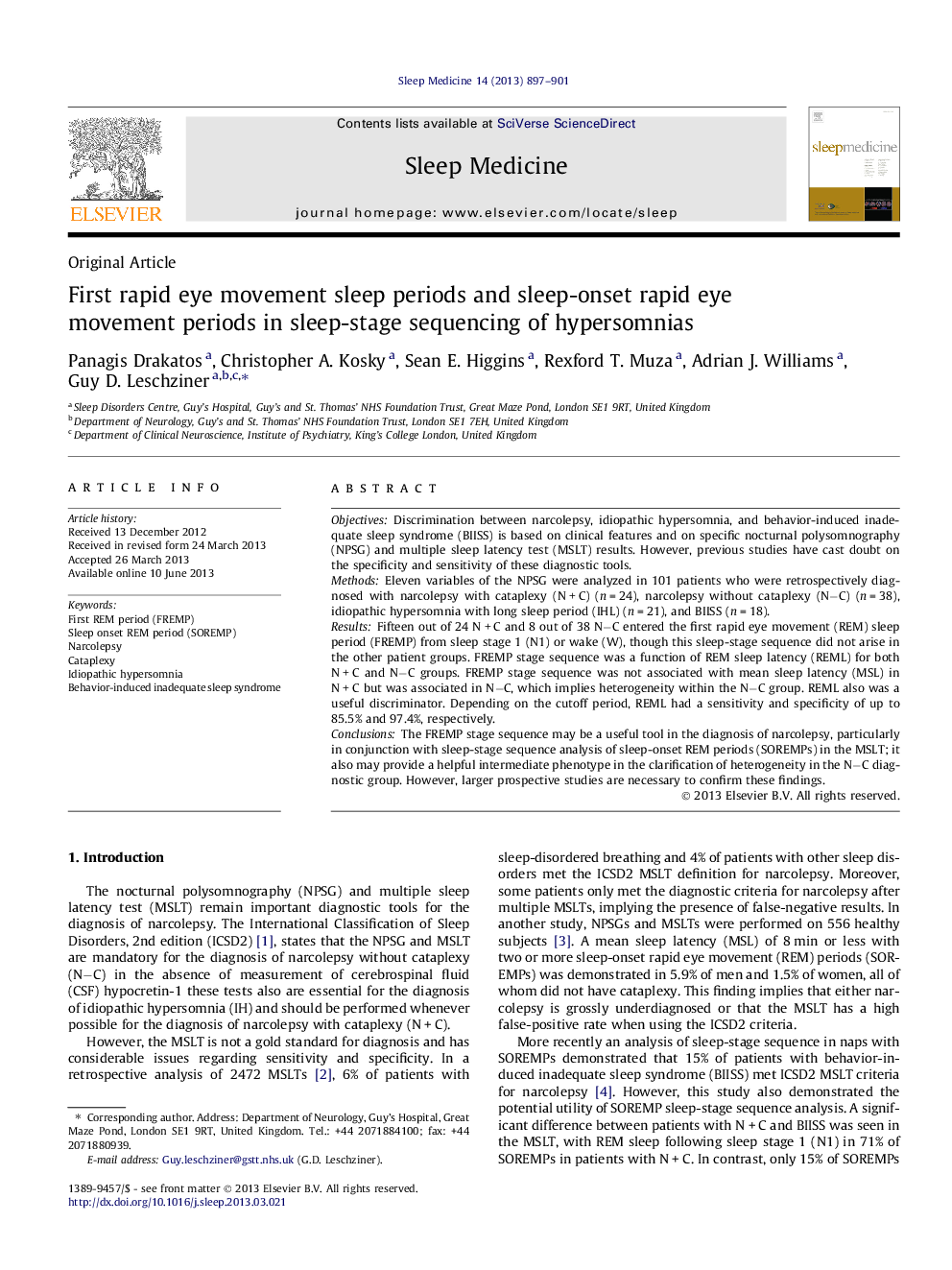| Article ID | Journal | Published Year | Pages | File Type |
|---|---|---|---|---|
| 3176355 | Sleep Medicine | 2013 | 5 Pages |
ObjectivesDiscrimination between narcolepsy, idiopathic hypersomnia, and behavior-induced inadequate sleep syndrome (BIISS) is based on clinical features and on specific nocturnal polysomnography (NPSG) and multiple sleep latency test (MSLT) results. However, previous studies have cast doubt on the specificity and sensitivity of these diagnostic tools.MethodsEleven variables of the NPSG were analyzed in 101 patients who were retrospectively diagnosed with narcolepsy with cataplexy (N + C) (n = 24), narcolepsy without cataplexy (N−C) (n = 38), idiopathic hypersomnia with long sleep period (IHL) (n = 21), and BIISS (n = 18).ResultsFifteen out of 24 N + C and 8 out of 38 N−C entered the first rapid eye movement (REM) sleep period (FREMP) from sleep stage 1 (N1) or wake (W), though this sleep-stage sequence did not arise in the other patient groups. FREMP stage sequence was a function of REM sleep latency (REML) for both N + C and N−C groups. FREMP stage sequence was not associated with mean sleep latency (MSL) in N + C but was associated in N−C, which implies heterogeneity within the N−C group. REML also was a useful discriminator. Depending on the cutoff period, REML had a sensitivity and specificity of up to 85.5% and 97.4%, respectively.ConclusionsThe FREMP stage sequence may be a useful tool in the diagnosis of narcolepsy, particularly in conjunction with sleep-stage sequence analysis of sleep-onset REM periods (SOREMPs) in the MSLT; it also may provide a helpful intermediate phenotype in the clarification of heterogeneity in the N−C diagnostic group. However, larger prospective studies are necessary to confirm these findings.
